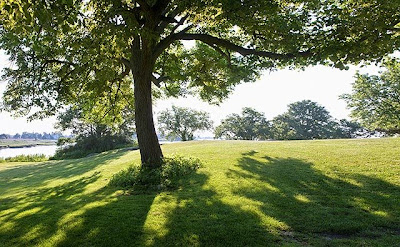
People interested in evidence-based landscape design are usually underwhelmed by the amount of solid research out there. It’s hard to design a garden for, say, people with schizophrenia, when so little research has been done on this specific population. Or as another example, sure, we all know by now that people prefer lots of greenery to spaces that don’t have much plant material. But what kinds of plant material do they prefer? What colors, shapes, textures, forms? The study below discusses preferred tree forms. So although often we don’t have enough information, sometimes we can be overwhelmed by what has been published. Of the research that exists, how do we tease out what’s the newest, the most valid, the most pertinent to our specific project?
The Therapeutic Landscapes Research Initiative (TLRI) was launched as a way to try to answer these questions and fill some of the gaps. After all, designers and people in health and human services don’t have much time for research. They want answers quickly, and the more current and germane to their project, the better. Funded by ASLA and spearheaded by several ASLA Healthcare and Therapeutic Design Professional Practice Network members, the TLRI is an excellent resource. Students at Iowa State have compiled a list of the most current and relevant articles from over twenty journals and other publications, with synopses of each study that really help give a sense of what the research is about.
And here’s one example:
“Responses to Scenes with Spreading, Rounded, and Conical Tree Forms.”
This study sought to understand reactions and preferences of 206 participants to different types of tree forms. It was predicted that people would have a preference for the savanna-like spreading form. Participants viewed slides of trees that were digitally enhanced to emphasize the conical, spreading, and rounded tree forms. Measurement tools included preference questions, affective responses, skin temperature, and blood pressure. Results revealed that the spreading form was preferred over rounded and conical forms. It was also important that any tree form was preferred over inanimate objects in an urban setting. Trees, regardless of their shape or canopy density, are essential in urban environments for the well-being of the residents.” Environment and Behavior, 12/20/2007, 5 667-688.
